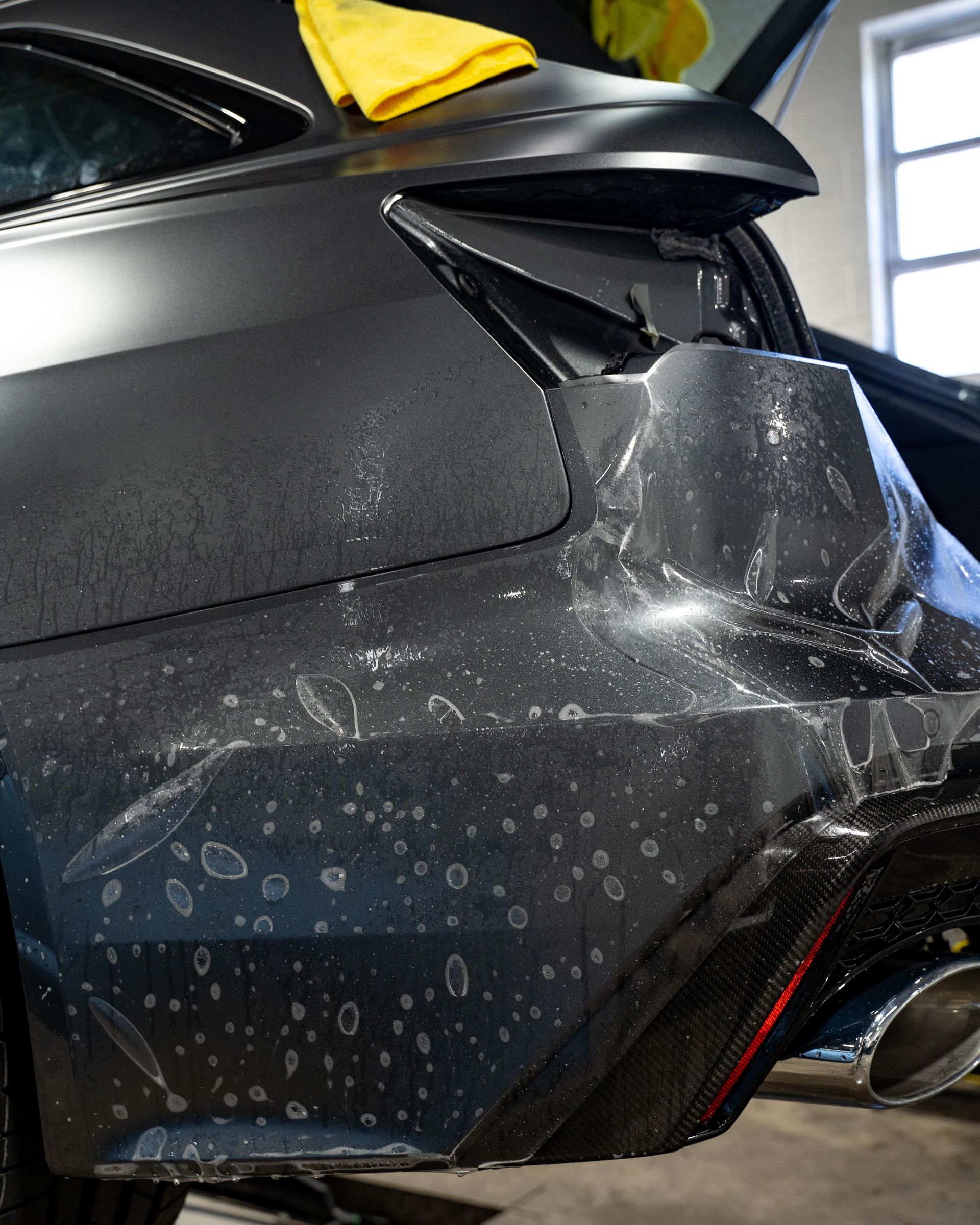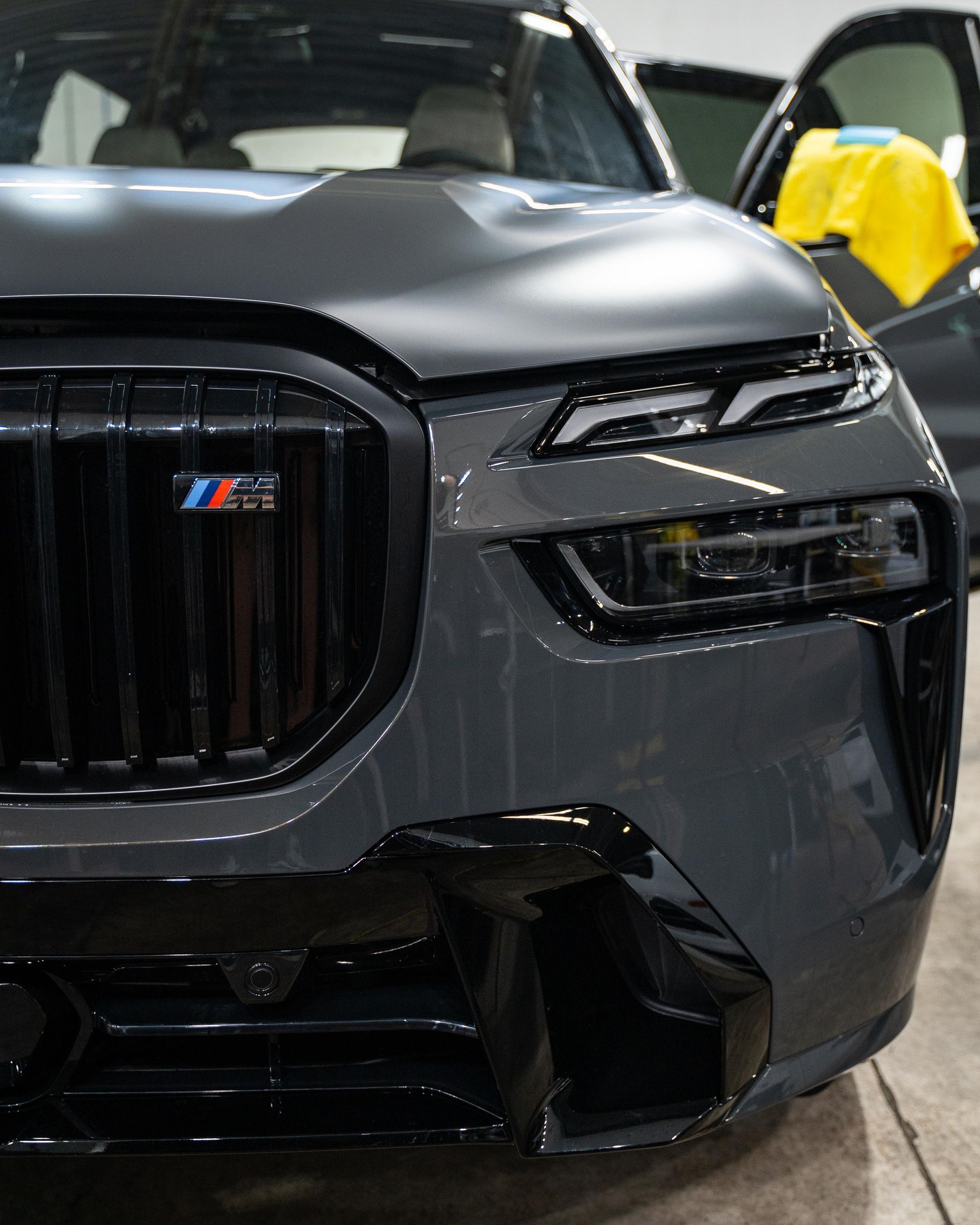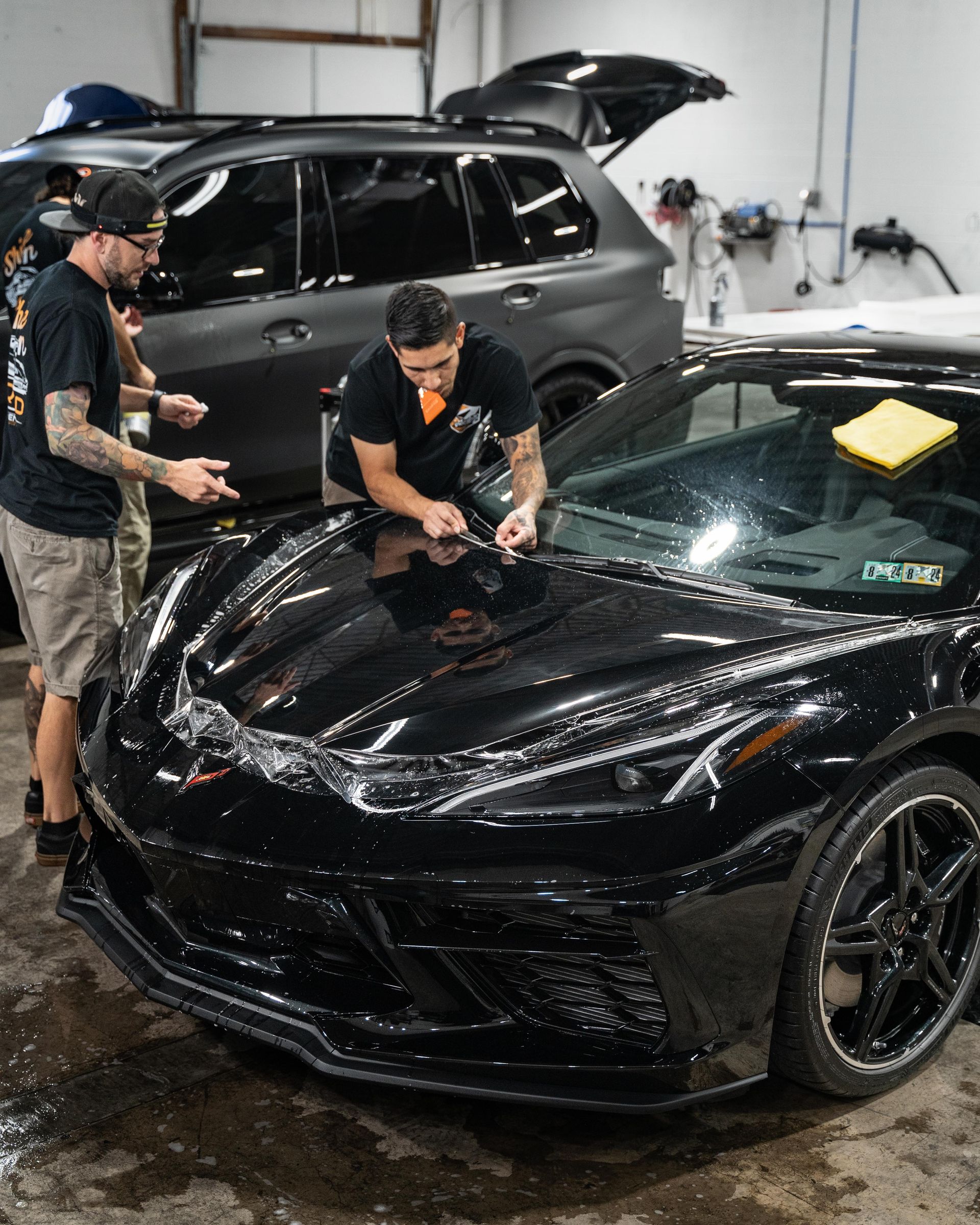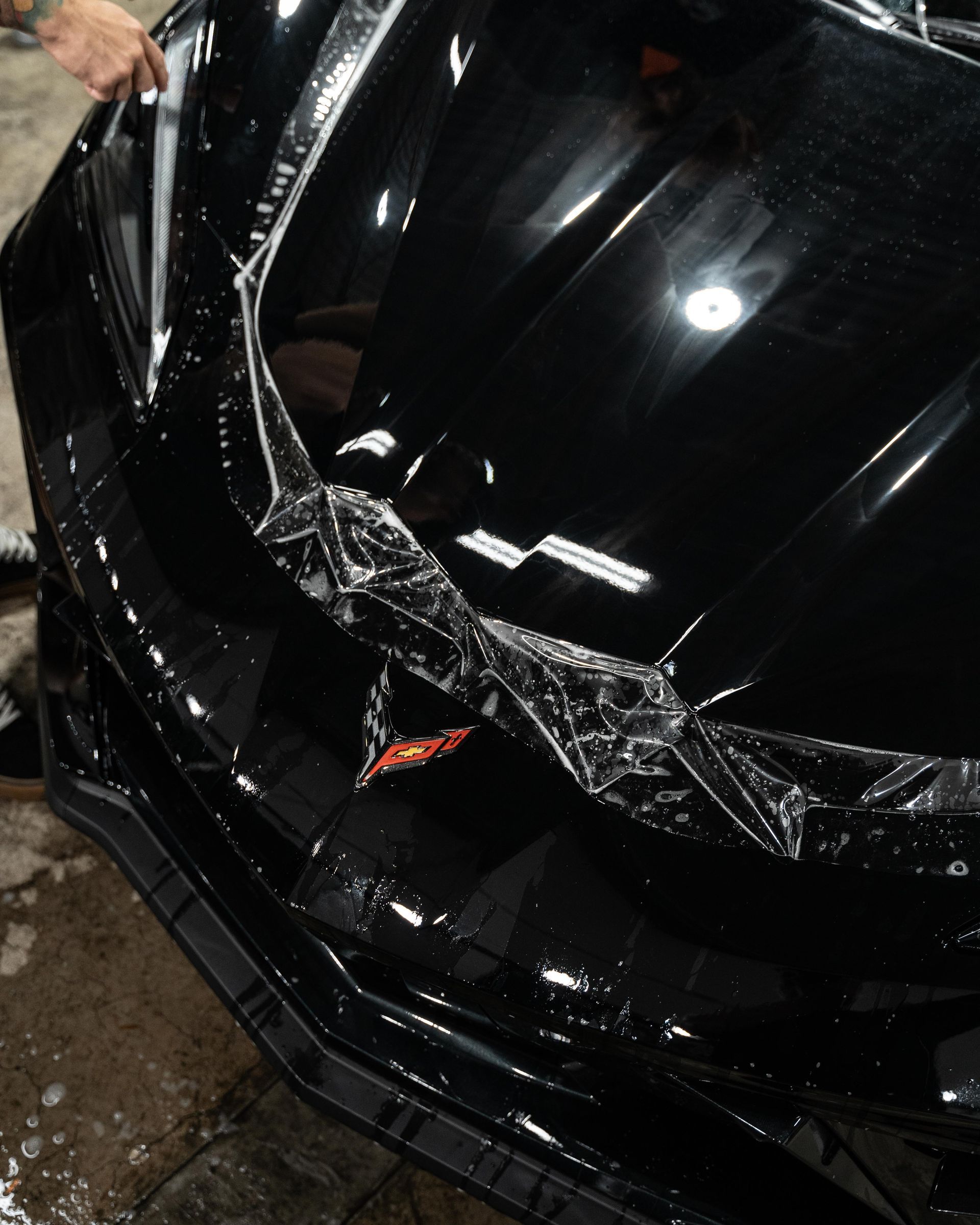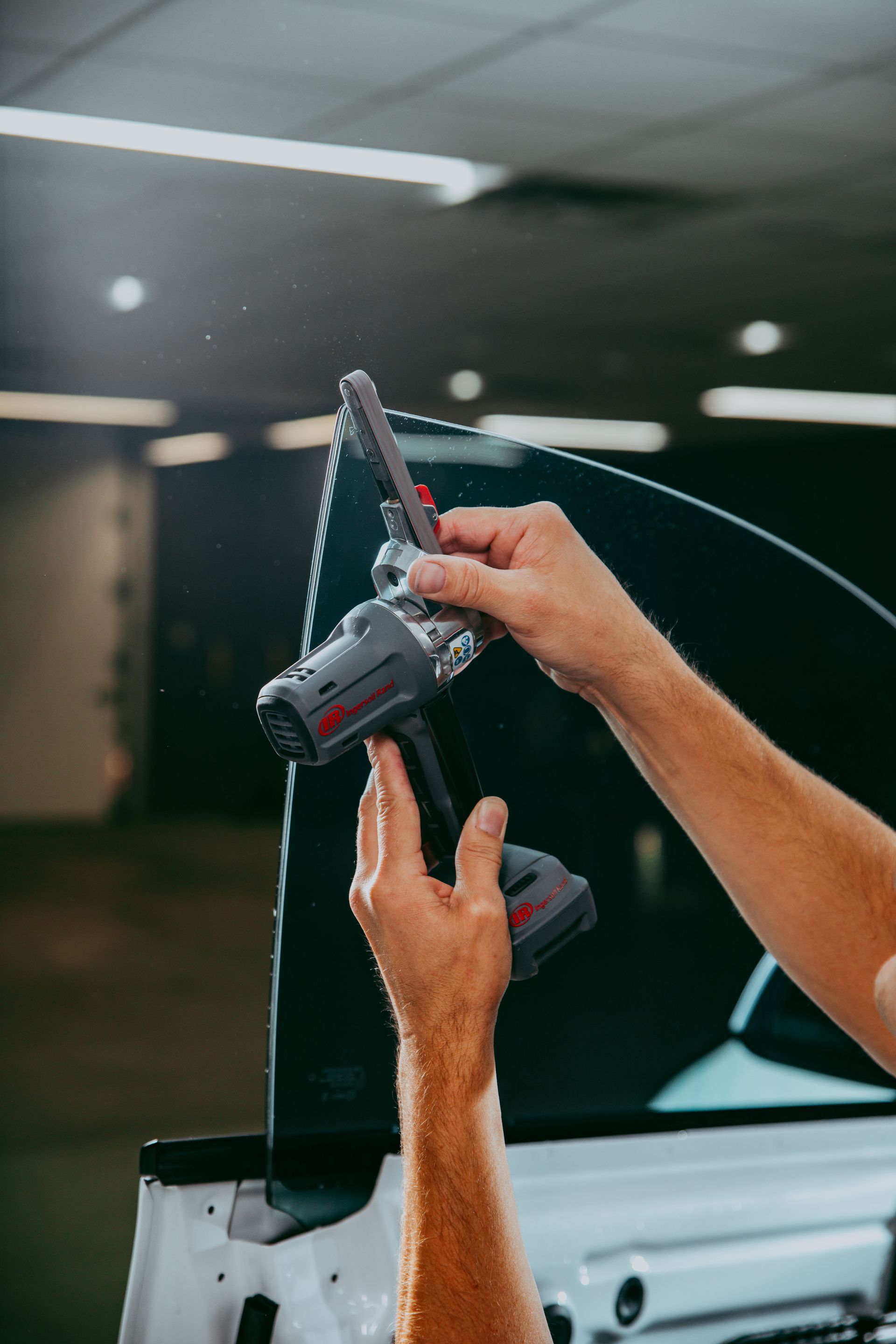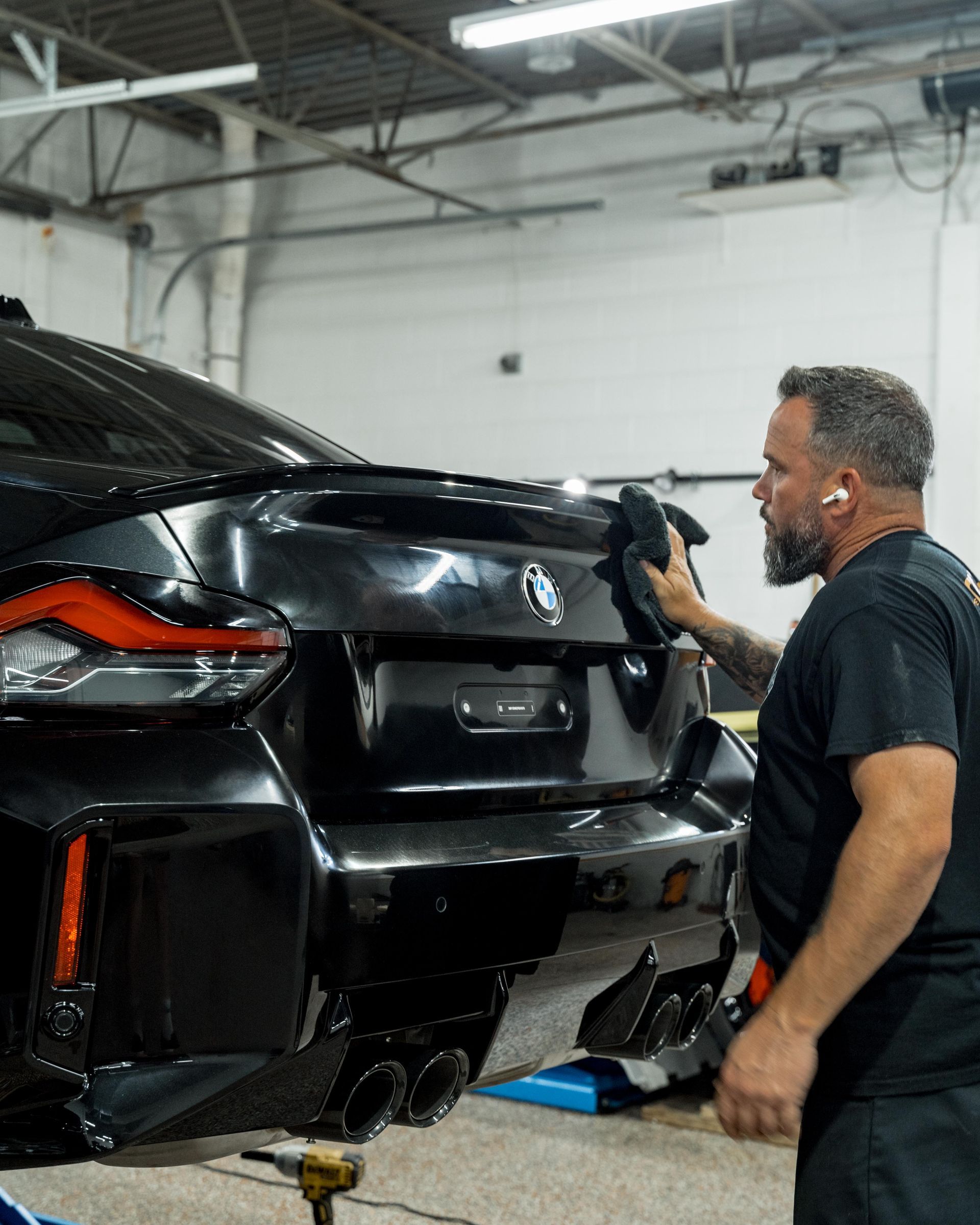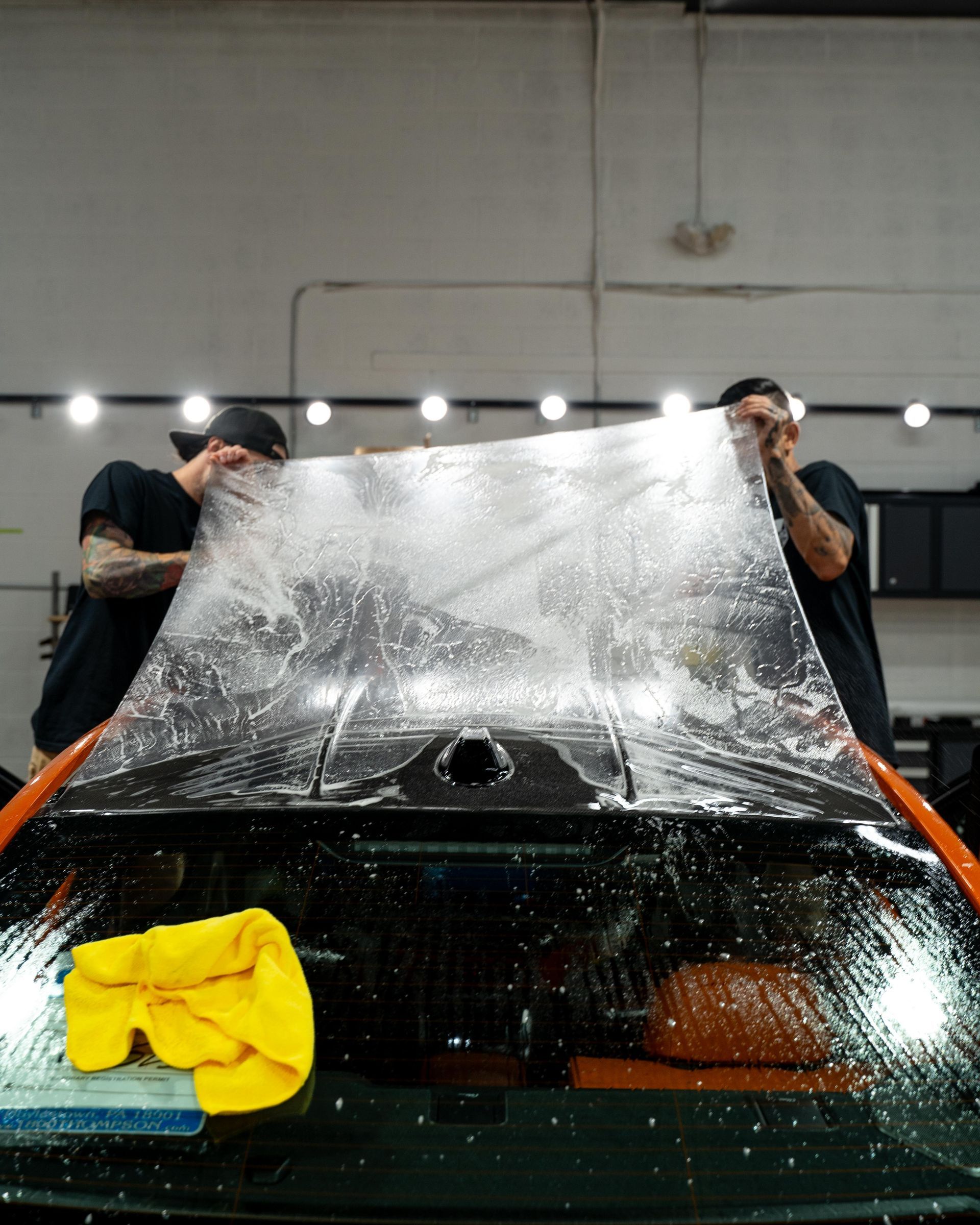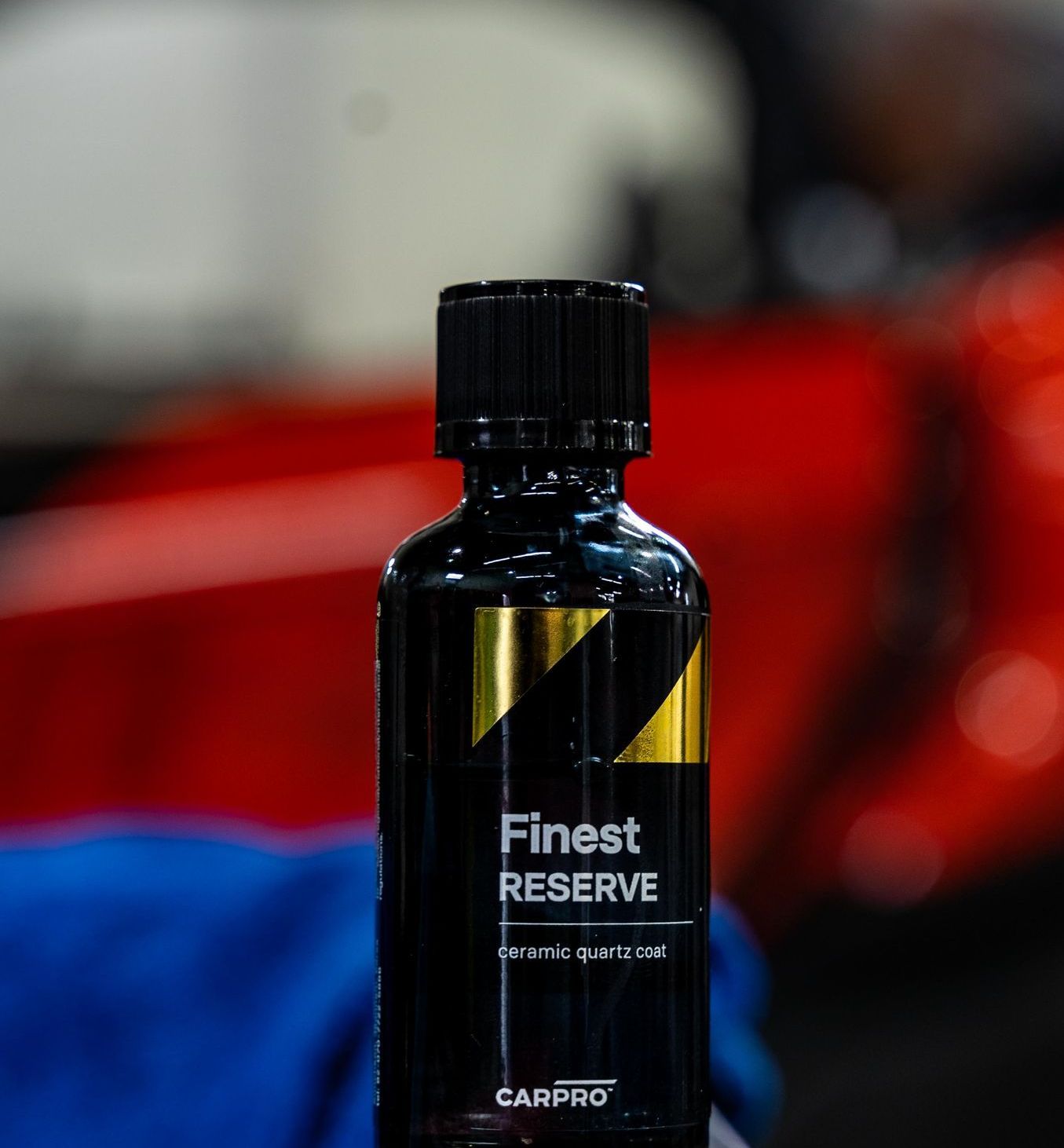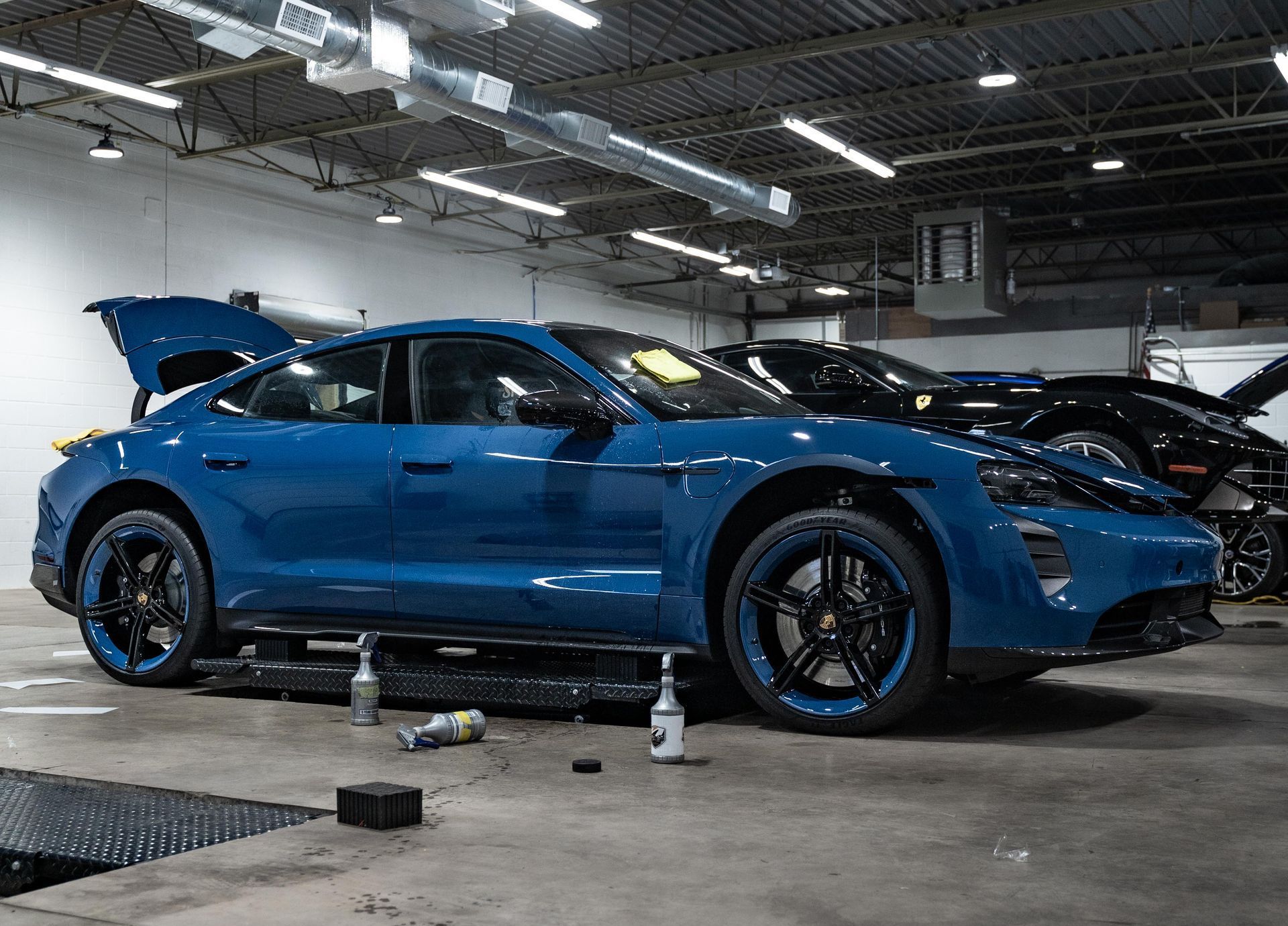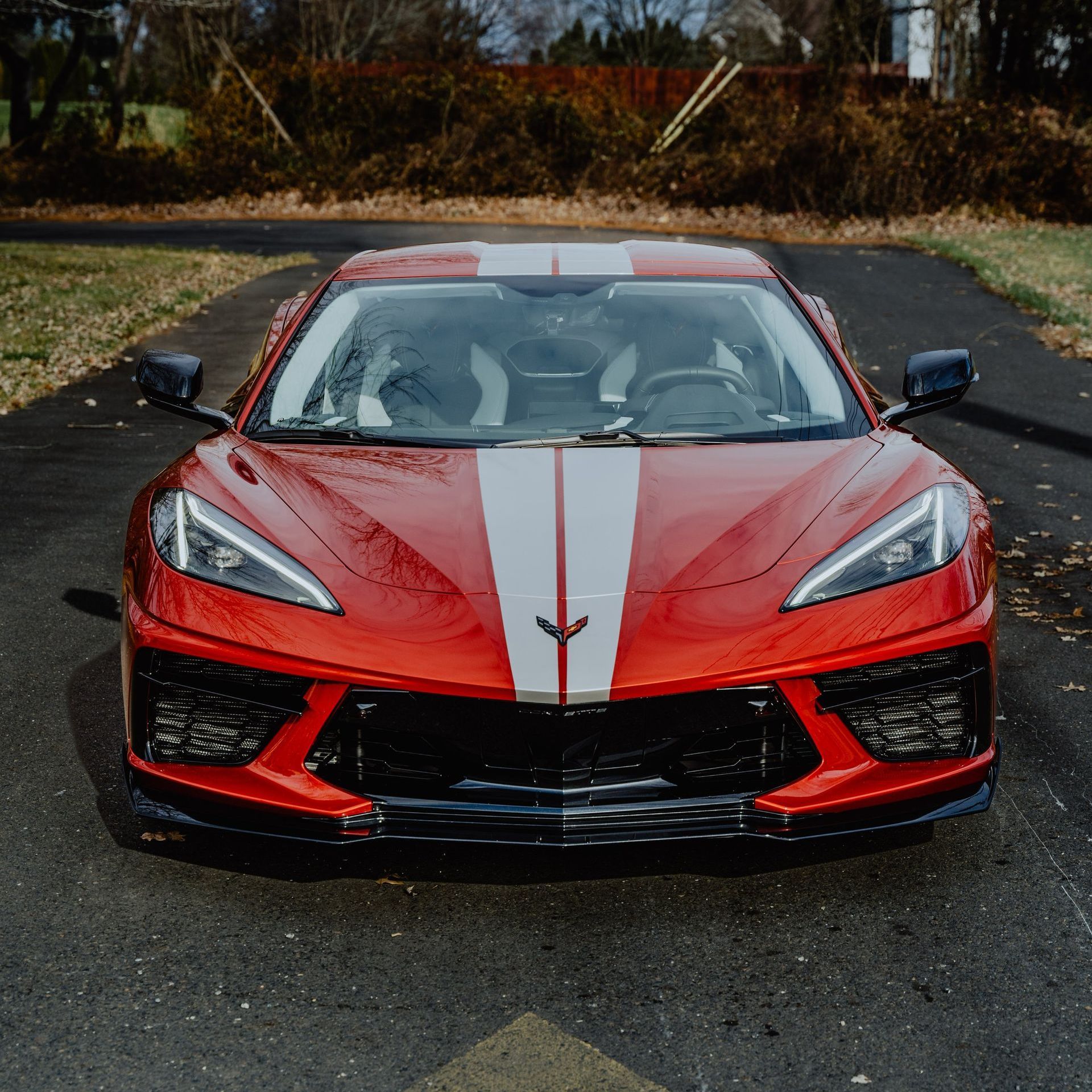Understanding Self-Healing Properties of Premium PPF: Automotive Protection Explained
CALL (833) 263-6273
In today’s driving environment, vehicles are frequently exposed to a range of everyday hazards—ranging from shifting weather conditions and road debris to accidental contact from passengers. Maintaining a flawless exterior under such circumstances can be a considerable challenge. One effective solution is the application of paint protection film (PPF), particularly advanced formulations that feature self-healing properties. These high-performance films offer a reliable way to preserve a vehicle’s finish without the constant concern over minor surface imperfections.
Premium paint protection film (PPF) features advanced self-healing properties that allow it to recover from minor scratches and abrasions when exposed to heat, effectively maintaining the visual appearance of the vehicle. This ability is due to the specialized elastomers within the film, which reflow into their original shape, making PPF an excellent choice for protecting your vehicle's surface from daily wear and tear.
What is Premium PPF?
Premium paint protection film (PPF) is much more than just a clear covering; it’s a sophisticated shield designed to protect your vehicle from the daily wear and tear of driving life. Imagine a robust armor that clings seamlessly to your car's surface, defending it from chips caused by gravel or unsightly scratches from careless passengers. At its core, this protective film consists of advanced thermoplastic urethane (TPU), a material known for its remarkable flexibility and high durability. This guarantees that not only can it withstand impacts, but it can also easily conform to the unique shapes of different vehicles.
To fully appreciate the effectiveness of premium PPF, let’s break down its layers. Each layer has a specific function contributing to overall protection. The top clear coat provides self-healing properties, allowing minor scratches to disappear over time when exposed to heat. Beneath that lies the polyurethane middle layer, which absorbs impact and acts as a formidable barrier against potential damage. Finally, there's the adhesive layer, which ensures that the film adheres securely to your vehicle's paintwork without causing harm during installation or removal.
Mechanics of Self-Healing Technology
At the heart of premium paint protection film (PPF) lies a sophisticated mechanism made possible by specialized elastomers. These materials act like tiny superheroes in your car’s protective shield, ready to spring into action. When the PPF is scratched or scuffed, these elastomers have the extraordinary ability to flow back into their original shape when exposed to heat ranging from 140°F to 160°F. This unique quality allows them to effectively erase minor abrasions almost instantly, returning surfaces to a flawless state. The process is quite remarkable when you break it down. When heat is applied—whether it's from direct sunlight on a warm day or even from the engine warmth after a drive—the elastomers soften and become malleable. They then reflow, rearranging themselves to fill in the scratches and imperfections, which restores both appearance and smoothness. Imagine using a rubber band that relaxes back to its original length after being stretched: it’s based on molecular memory that embodies resilience.
Key Benefits of Self-Healing Films
One of the most notable advantages of self-healing paint protection film (PPF) is its ability to enhance vehicle appearance. Imagine driving a car that consistently sparkles, despite the wear and tear of day-to-day life. Minor abrasions and scratches can heal themselves within 24 to 48 hours when exposed to heat—perhaps even just from the warmth of the sun. This unique property means that your vehicle maintains its pristine look over time, allowing it to appear newer for longer, which is something every car owner dreams about. To put this into perspective, studies show that vehicles protected by premium self-healing PPF exhibit as much as 50% less paint deterioration compared to those without any protection after three years. This significant reduction in wear underscores how proactive measures like self-healing films can save you money on repainting and restoration down the road.
Longevity and Protection
Investing in self-healing PPF not only keeps your vehicle looking sharp but also enhances its durability against environmental factors. These films form a barrier that shields your car from rock chips, road debris, and harmful UV rays. Consequently, the longevity of your vehicle’s paint job increases dramatically. With many self-healing products on the market offering warranties between 5 and 12 years, these films stand as a testament to their robustness and effectiveness. Furthermore, protecting your investment through high-quality PPF can bolster resale value. Potential buyers are often keenly aware of how a vehicle's exterior reflects its overall maintenance. A car adorned with a flawless finish speaks volumes about how it has been cared for—making it more appealing to purchasers. Given that first impressions count, maintaining an impeccable look not only satisfies aesthetics but also positions your vehicle favorably in a competitive resale market.
Traditional Films vs. Modern Solutions
Traditional paint protection films (PPF) have served a fundamental purpose: they provide a physical barrier that shields vehicles from damage. While widely praised for their ability to protect against scratches and chips, these films lacked a crucial feature that modern consumers crave: self-healing properties. Imagine this scenario: after a week of seeing your car take hits from road debris or weather elements, those little chips sully the pristine finish. With traditional films, these marks become permanent reminders of wear and tear, diminishing your vehicle's aesthetics.
In contrast, modern PPF brings a whole new level of sophistication to vehicle protection. Not only do these advanced films shield your paint from everyday hazards, but they also possess the remarkable ability to repair themselves when exposed to heat. If a minor scratch occurs, simply driving your car out into the sun or applying warmth with a hairdryer can erase those imperfections like magic. This leap in technology signifies not just an upgrade; it's a redefinition of what protection means in automotive care. It’s fascinating to observe how consumer preferences have guided innovation in this sector. The appetite for more technologically advanced protective films highlights an emerging narrative where vehicle protection seamlessly integrates with technological advancements rather than merely serving as an afterthought.
Expert Installation Tips
The first cornerstone of a successful installation lies in surface preparation. An impeccably clean surface is non-negotiable; it's like prepping a canvas before painting. Dust, dirt, and even the tiniest specks can weaken the bond between the film and your vehicle. Use a lint-free microfiber cloth along with an effective automotive cleaner to wipe down every inch. This initial step sets the foundation for a long-lasting application, ensuring optimal adhesion. Transitioning seamlessly from preparation, tailored cutting plays a significant role next. While many DIY kits come with pre-cut templates, using precision cutting tools can provide an even better fit to the unique contours of your car. If you're not comfortable with cutting yourself, it’s worth investing in professional installers who have access to advanced software for custom cutting based on your vehicle's specifications. This ensures that every piece fits perfectly, minimizing waste and enhancing aesthetics.
Now we reach one of the more technical aspects: the application process. Employing the wet application method is not just a tip; it's an art form. Creating a soapy solution—typically water mixed with mild detergent—allows you to slide the film into position easily. This technique minimizes mistakes because you have time to adjust before the film adheres completely. It's almost like dance; you need careful precision but also flexibility to make changes as needed. After positioning the film correctly, it’s time for squeegeeing. This involves pressing out any air bubbles or excess water trapped underneath the film using a squeegee tool. Start from the center of the panel and push outward towards the edges—think of it as smoothing out wrinkles from fabric most effectively. Ensuring that no air pockets remain is critical since they can lead to peeling and diminish the performance of your PPF over time.
The final step in this meticulous process is allowing the film to cure adequately; typically, 24-48 hours are required for optimal adhesion. During this time, avoid washing or exposing your vehicle to extreme temperatures. Think of it as letting bread rise; patience pays off. Without proper curing time, even expertly applied films can fail to stick securely. Consider this important piece of advice: while some may attempt to install PPF themselves, getting it done by professionals can make a significant difference in outcomes. They bring years of experience, ensuring that each step is executed flawlessly. A small misstep during installation can compromise the film’s effectiveness.
Evaluating Cost vs. Value
Premium PPF may seem pricey at first glance, but far beyond its upfront cost lies an array of substantial benefits. When you evaluate the expenses associated with maintaining a vehicle, it becomes clear that the investment in PPF is more than just a way to keep your car looking sharp—it's also a financial strategy. This thermoplastic layer not only defends against road debris and contaminants but also acts as a barrier to ugly scratches and marks that can depreciate your vehicle's value.
Long-Term Value
Another crucial point is maintenance costs. Premium PPF requires minimal upkeep due to its self-healing properties, which can mend minor scratches when exposed to heat—think of it as your vehicle's own armor. This self-healing ability means fewer visits required for paint repairs, ultimately saving you cash over time. The long-term savings you reap from avoiding costly repainting—which can average around $1,500 per panel—shouldn't be overlooked either. Furthermore, consider the factor of longevity; premium PPF has been designed to last upwards of 10 years with proper care. This durability keeps your vehicle looking as good as new and preserves its factory finish against UV rays and environmental factors that would typically lead to fading and discoloration.
Thus, when evaluating PPF's cost versus value proposition, the formula becomes quite favorable: start with a higher initial investment and reap the benefits in lower maintenance costs plus higher resale value. The equation comes together beautifully when you factor in how well-maintained cars perform better in resale markets. With less money spent on upkeep and more secured returns upon selling your vehicle later on, investing in premium PPF quickly turns into a savvy choice—one that pays dividends through convenience, protection, and enhanced market appeal. Protecting your investment with quality products will yield significant advantages down the road.
Exceptional PPF Services in West Chester, PA
Protect your vehicle from chips, stains, and everyday wear with
professional paint protection film services from Menard Premium Detailing in West Chester, PA. Our expertly installed PPF provides a nearly invisible layer of defense that preserves your vehicle’s finish while maintaining its original appearance. Whether you're driving through harsh weather or navigating crowded parking lots, this durable film helps guard against damage that can diminish your car’s value. Secure lasting protection for your vehicle—schedule your PPF service with Menard Premium Detailing today!

